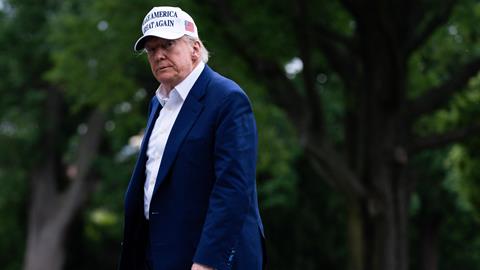Sometimes you look at something someone has done and you instantly know it’s odd, but it takes you a while to work out why. The time one of our mothers came to ‘help’ with childcare and put the baby’s nappy on back to front comes to mind. ‘Why,’ she was eventually asked, ‘have you done it like that?’
And so to US President Donald Trump’s $10bn defamation claim against the Wall Street Journal, Rupert Murdoch (actual first name ‘Keith’ – I hadn’t known that) and others. At issue is a story in WSJ (part of Murdoch’s News Corp media empire) claiming that Trump wrote a 'bawdy' note to sex offender Jeffrey Epstein in 2003 (before the latter was charged with sex crimes). Trump says the note is ‘fake’.
Respected media lawyer Mark Stephens CBE had something of a ‘why have you done it like that?’ reaction to the lawsuit as he read it through, and emailed some of his thoughts, which I’m drawing on here.
First to Trump’s choice of lawyers. Or lawyer, as it turns out. While I note that Kirkland & Ellis has signed up to do $125m of pro bono work for instructions of POTUS’s choice, he’s not using the firm. Or any firm like them.
Trump’s lawyer, sole practitioner Alejandro 'Alex' Brito, presents as a commercial franchise lawyer, based in Miami.
Second, in Stephens’ judgement, Keith, I mean Rupert, and News Corp's chief executive Robert Thomson ‘are likely not proper defendants in this suit and are likely to be struck out as improper defendants’.
Third, $10bn is quite a large sum. As a comparator, Dominion Voting’s claim was $1.2bn, and it settled for $787.5m, ‘which we all thought was extraordinary,’ Stephens says.
Fourth, he says (and as I am not an expert on this, I’ll quote him in full): ‘It seems that DJT as president is the ultimate "public figure" in US law. So the actual malice standard will undoubtedly apply. The actual malice standard, in the context of US defamation law, requires public officials (including president's) or public figures to prove that a defamatory statement was made with knowledge of its falsity or with reckless disregard for the truth. It's not simply about negligence or carelessness (which the complaint pleads); it's a higher bar that involves a defendant's state of mind at the time of publication.’
For that reason, Stephens says, ‘the complaint seems fundamentally flawed in that regard’, as it ‘fails to plead sufficient details to meet the actual malice standard in the USA’. This means ‘the entire suit, therefore, seems vulnerable to being struck out for failure to plead to the actual malice standard’.
What else? Trump, Stephens notes, ‘has to prove falsity’, and ‘he denied he ever draws’, despite having ‘sold drawings at auction as fundraisers’. ‘Someone has seen this, so his best hope appears to be that Ghislaine or one of her poor minions faked it to suck up to the boss (Epstein).’
Trump has to prove the story is defamatory. In 2003, Stephens notes, when the card was allegedly sent, ‘Epstein hadn’t been charged with anything and was accepted in polite society’. Stephens notes Trump ‘says he had no knowledge of Epstein's behaviours of which we would disapprove, so why is it defamatory to say he sent that kind of person a birthday greeting, even a louche one?’.
Trump must also prove damage. Would the alleged sending of the birthday card be ‘surprising or out of character’, Stephens asks? And if not: ‘How does this lower him in the estimation of right-thinking people?’
Of course, one never knows what will happen in Trump’s America. But if his claim against Murdoch goes nowhere, it’ll be because it’s on back to front.




































